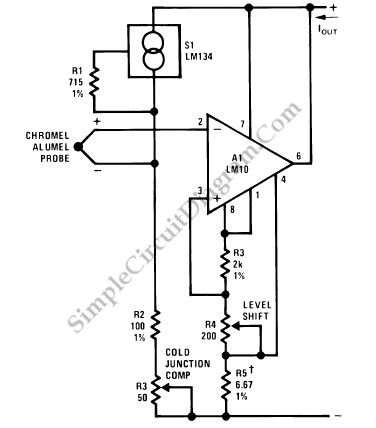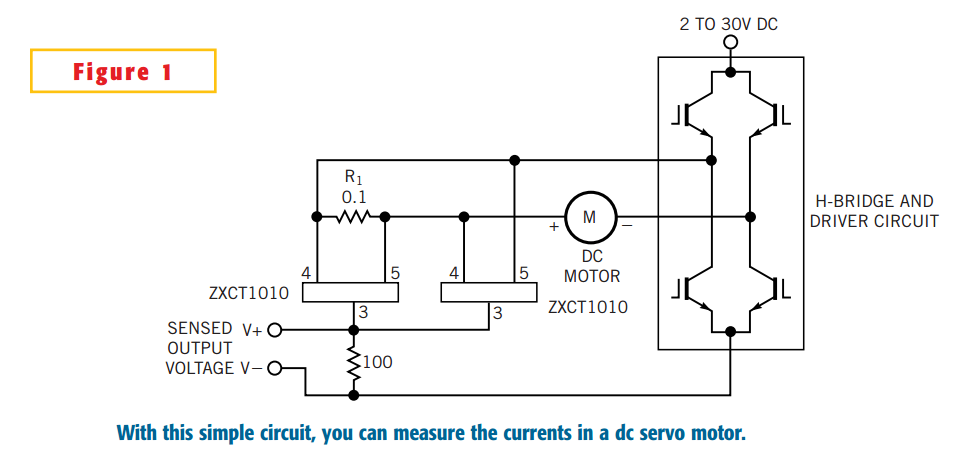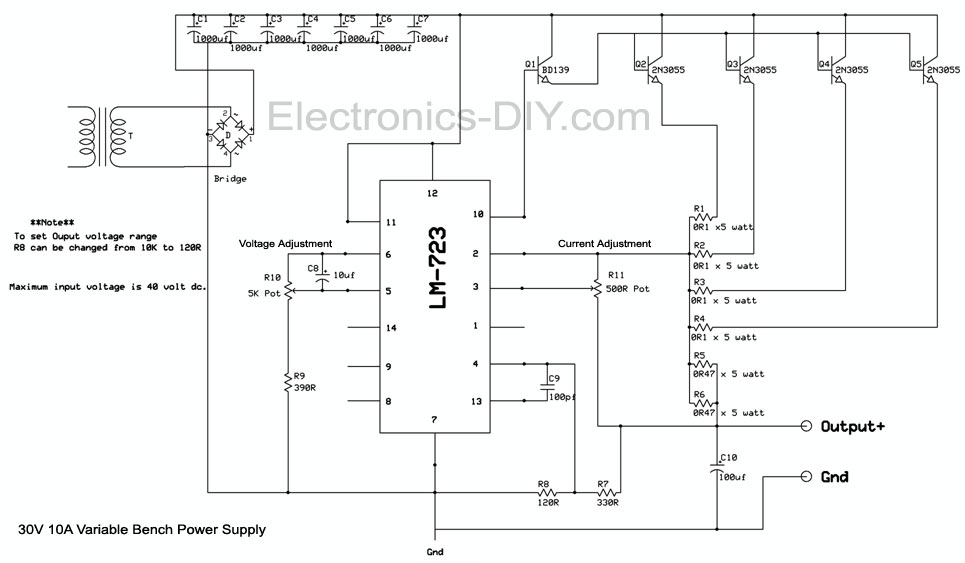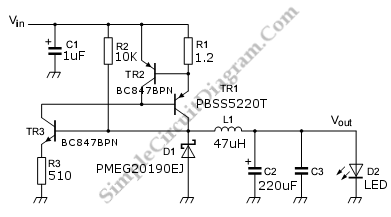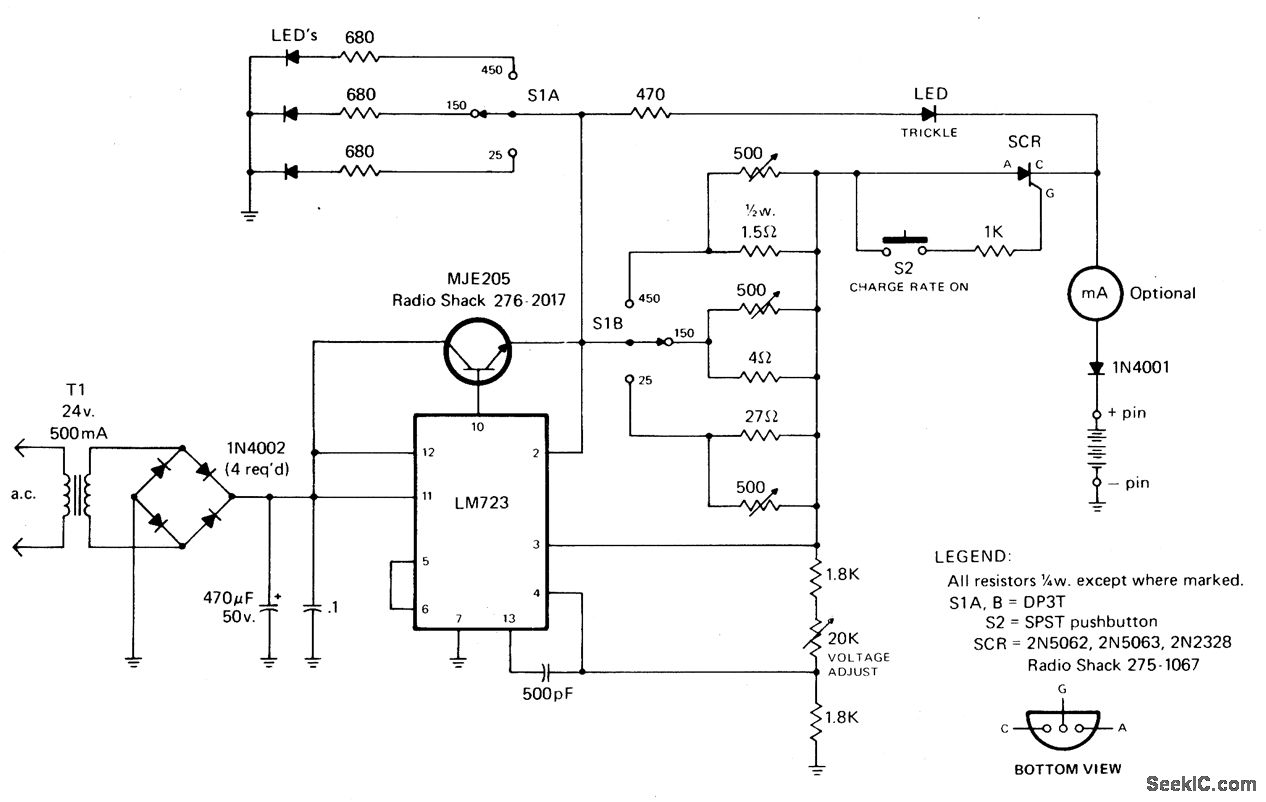
constant current battery charger
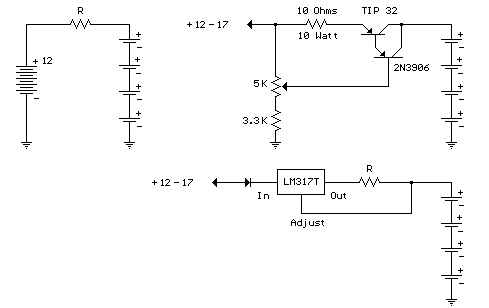
A straightforward method for charging a battery using a higher voltage source is illustrated in the accompanying circuit diagram. The circuit requires only one resistor to establish the desired charging current, which can be determined by dividing the voltage difference between the batteries by the charge current.
The circuit operates by connecting a higher voltage battery in parallel with the battery to be charged. The resistor plays a crucial role in controlling the current flowing into the charging battery. To calculate the appropriate resistance value, the voltage difference between the source battery and the target battery is measured. This voltage difference is then divided by the desired charging current to obtain the resistance value using Ohm's Law (R = V/I).
For instance, if the higher voltage battery is at 12V and the battery being charged is at 6V, the voltage difference is 6V. If the desired charging current is 1A, the required resistance would be R = 6V / 1A = 6 ohms. This resistor must be rated to handle the power dissipation, which can be calculated using the formula P = I^2 * R. In this case, P = (1A)^2 * 6Ω = 6W, so a resistor rated for at least 10W would be advisable to ensure reliability and prevent overheating.
Additionally, it is essential to consider the specifications of both batteries to ensure safe charging. The charging process should be monitored to prevent overcharging, which can lead to battery damage or reduced lifespan. Implementing a diode in series with the charging circuit can prevent reverse current flow when the higher voltage battery is disconnected, thereby protecting the charged battery.
Overall, this simple charging circuit is effective for applications where a higher voltage source is available, and it can be easily modified to accommodate different voltage and current requirements by adjusting the resistor value accordingly.A simple method of charging a battery from a higher voltage battery is shown in the circuit below to the left. Only one resistor is needed to set the desired charging current and is calculated by dividing the difference in battery voltages by the charge current..
🔗 External reference
The circuit operates by connecting a higher voltage battery in parallel with the battery to be charged. The resistor plays a crucial role in controlling the current flowing into the charging battery. To calculate the appropriate resistance value, the voltage difference between the source battery and the target battery is measured. This voltage difference is then divided by the desired charging current to obtain the resistance value using Ohm's Law (R = V/I).
For instance, if the higher voltage battery is at 12V and the battery being charged is at 6V, the voltage difference is 6V. If the desired charging current is 1A, the required resistance would be R = 6V / 1A = 6 ohms. This resistor must be rated to handle the power dissipation, which can be calculated using the formula P = I^2 * R. In this case, P = (1A)^2 * 6Ω = 6W, so a resistor rated for at least 10W would be advisable to ensure reliability and prevent overheating.
Additionally, it is essential to consider the specifications of both batteries to ensure safe charging. The charging process should be monitored to prevent overcharging, which can lead to battery damage or reduced lifespan. Implementing a diode in series with the charging circuit can prevent reverse current flow when the higher voltage battery is disconnected, thereby protecting the charged battery.
Overall, this simple charging circuit is effective for applications where a higher voltage source is available, and it can be easily modified to accommodate different voltage and current requirements by adjusting the resistor value accordingly.A simple method of charging a battery from a higher voltage battery is shown in the circuit below to the left. Only one resistor is needed to set the desired charging current and is calculated by dividing the difference in battery voltages by the charge current..
🔗 External reference
